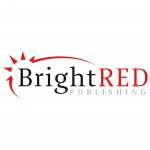
ABOUT THIS BOOK
PUBLISHER: Scotland Street Press
FORMAT: Paperback
ISBN: 9781910895795
RRP: £9.99
PAGES: 100
PUBLICATION DATE:
June 15, 2023
BUY THIS BOOK
As an Amazon Associate and Bookshop.org affiliate we earn from qualifying purchases.
The MacDiarmid Memorandum
Alexander Moffat
Ruth Nicol
Ronald Stevenson
Alan Riach’s The MacDiarmid Memorandum is a work of epic, category-defying scope; a work that blends biography and national history, poetry and prose; an intimate portrait of an old friend and mentor, and a political manifesto calling for revolution. Beginning with his childhood in Langholm, Riach shows us MacDiarmid’s first attempts to orient the Scottish landscape, a world in which so-called natural features are interwoven with and inseparable from the political. It is in orientating his surroundings that MacDiarmid takes his first steps on a journey towards a peculiarly Scottish kind of consciousness; a consciousness that both wills itself to be free, and bows under the weight of its own self-suppression. This is a work that charts a war on various fronts: in MacDiarmid’s personal life, he experienced periods of unemployment, destitution, alcoholism, divorce, trauma; and at the same time, the country entered two major world wars, in turn triggering a renaissance of Scottish artists and intellectuals, struggling (on their own front) for recognition and self-determination.Riach’s idea for The MacDiarmid Memorandum originated in an exhibition, Landmarks: Poets, Portraits and Landscapes of Modern Scotland, which showcased major 20th century Scottish poets alongside paintings by critically acclaimed artists, Alexander Moffat and Ruth Nichol, with a particular focus on Scottish landscapes and portraits of the relevant poets. Included in this book, alongside Riach’s poems, are reproductions of some of the original paintings that appeared in the exhibition, offering a vivid, feeling complement to Riach’s text.
Alan Riach
ALAN RIACH is Professor of Scottish Literature at the University of Glasgow, the author of eight poetry collections, including Homecoming and The Winter Book, six books of literary and cultural criticism, and General Editor of the Carcanet edition of the Collected Works of Hugh MacDiarmid.ALEXANDER MOFFAT is a painter, teacher and advocate of the arts, formerly head of Painting at Glasgow School of Art, whose works are held at the National Galleries of Scotland, the University of Edinburgh, the University of Glasgow and the Royal Scottish Academy.RUTH NICOL is an artist whose work is held in the Scottish Parliament and represented by the Open Eye Gallery, Edinburgh, the Line Gallery, Linlithgow and the Junor Gallery, St Andrews, and is regularly shown at the Royal Scottish Academy, the Royal Glasgow Institute and Paisley Art Institute.











